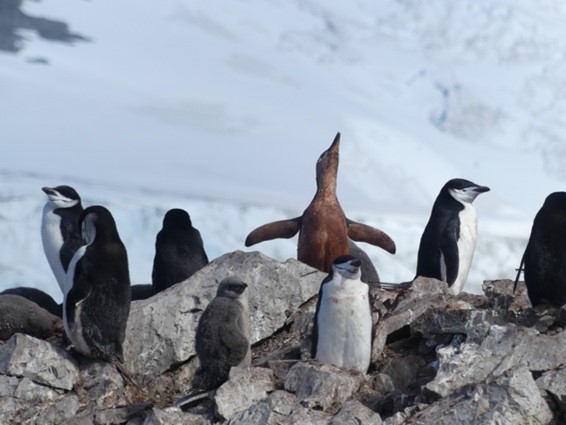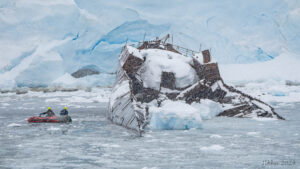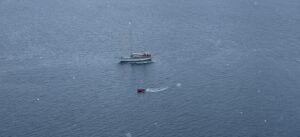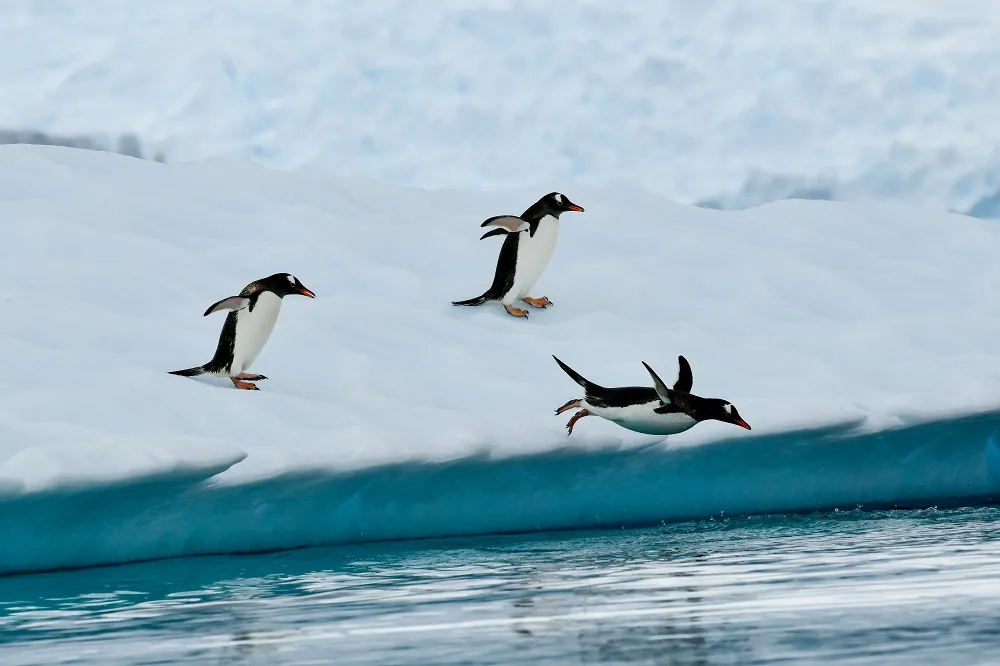Penguin Science: How to Count them!
Penguins, Penguins and More Penguins – How many are there? How do you even count? Michael Wethington asks these questions and many more as part of his PhD. On the Dec 1, and Dec 21, 2022 departures of Ocean Tramp. His primary focus will be to census as many local penguin colonies as possible using a drone (permitted for scientific use). When he says census he means to determine which species, penguin or otherwise, occupy a given location, and count the total number of active penguin nests to estimate overall abundance.
Across Antarctica, there are hundreds of penguin colonies spotted along the coastline, many of which have rarely or never been censused due to challenges associated with accessing them by larger vessels. One of the exciting things about using drones is that they enable researchers like myself to capture the state of penguin colonies, both from within the colonies themselves, as well as from the directly from ships when difficult or dangerous conditions prevent us from being able to land on the shoreline. When combined with the flexibility of a smaller vessel like the one we’ll be living on, this level of accessibility enables rare and often unprecedented opportunities to do science in areas and conditions that would make it infeasible in the not too distant past.
By completing this census work, researchers can better paint a picture of the state and health of wildlife populations and thus better understand how factors such as climate change are influencing them. Moreover, because I’ll be the lone Antarctic scientist on-board, there will be a plenty of opportunities for passengers to assist me with the work if they’re interested. Whether it happens to be helping plan a site census or directly assist as a drone spotter you’ll be more than welcome to participate in Antarctic wildlife research.
About Michael
He is an Ecologist, Environmental Data Scientist and Geographer.
He is originally from Minnesota, USA, often referred to as the land of 10,000 lakes (in truth there are 14,380). Presently, he is an Ecology PhD Candidate in the Lynch Lab for Quantitative Ecology at Stony Brook University in New York.
He likes thinking about and investigating a lot of different kinds of things. As he says, “I like thinking about why things are the way they are, why you find things where you find them and why they’re arranged the way they are. For me, ecology is an incredible tool (and a philosophy) for understanding and answering questions relating to these ideas. I spend time in Antarctica researching penguins, seals and sea ice and get excited thinking about how they share space together, interact with and influence each other.”
His research involves finding new ways to get environmental and ecological data, determining how to use those data to understand the realities of climate change in Antarctica and then communicate those findings to effect change. He uses Remotely-piloted aircraft systems (RPAS aka “drones”), Earth orbiting satellites, and machine-learning methods to understand how Antarctic Predators interact with their environments and how those environmental features influence where animals go, what they do, and how healthy they are across time. A major emphasis of my work is the relationship between multi-decadal declines of sea ice and declines and changes among penguin populations throughout Antarctica.
In addition to previous ship-based field work in Antarctica, he participated in several Greenpeace Antarctic expeditions as a Stony Brook University researcher. During these expeditions he used RPAS (drones) and other field-based methods to document and analyze patterns of penguin population change throughout the Antarctic Peninsula.
Outside of my scientific work, I make music, look at birds, ride bicycles through New York City, paddle canoes across lakes along the USA/Canadian border, and visit new film venues and roam bookstores and trying to read as much as I can with the time available to me. You’ll often find me carrying binoculars, an audio field recorder and thermos of hot coffee.
Links to Michael’s Work:
- New York Times Article about last years expedition to the Northern Antarctic Peninsula and Weddell Sea
- Surveying Elephant Island Chinstrap Penguin Colonies











